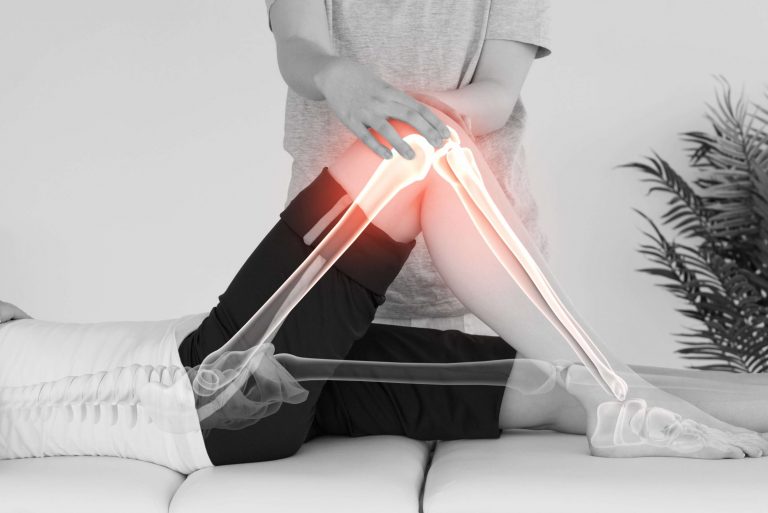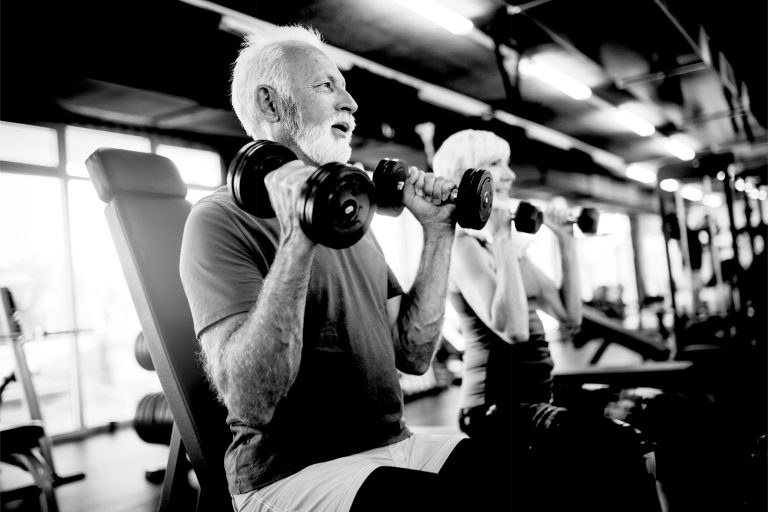There’s no denying the impact that impaired balance can have on the health and livelihood of older adults. As we age mobility deficits, muscle atrophy, and vision changes can lead to unsteadiness, loss of balance, and decreased confidence in our movement. Everyday tasks such as getting dressed and showering become more difficult as our balance declines, and we begin to lose our sense of independence.
More importantly our safety becomes compromised as our balance decreases. Last year there were 36 million reported falls in the US, and on average approximately 32,000 deaths occur each year due to falls. 95% of hip fractures are caused directly by falling, resulting in loss of mobility, function, and quality of life. These statistics, while alarming, bring to light the importance of balance training and fall prevention as we grow older. While some falls can’t be prevented, many more can be avoided by improving our balance.
How do we maintain balance?
Our body relies on three primary systems to achieve postural balance: the somatosensory system, vestibular system, and the visual system. Each system works together to keep the body upright and anticipate or react to changes in our environment.
The somatosensory system uses nerves and muscle fibers to send signals to our brain about our positioning; lots of tiny neurons working overtime to create quick reactionary movements based on input from the environment around us. This system mainly affects balance in two ways: through physical contact with objects and surfaces (touch), and through the sensation of where our body parts are in relation to our head (proprioception). For example, health conditions that are often more common in older adults, such as Type II diabetes, can lead to the development of neuropathy and loss of sensation in the feet, resulting in balance deficits and falls.
The vestibular system (commonly referred to as the inner ear) is responsible for sensing whether our body is vertical, as well as how we are oriented in space. Without input from other systems the vestibular system can still inform us that our body is moving; for example, when standing in an elevator with no change in visual feedback, we are still aware that our body is moving up or down. Conditions that affect our vestibular system, such as vertigo, can trick the body into thinking we are falling or spinning, leading to dizziness and loss of balance.
We utilize our visual system by keeping our eyes steady when our head or body is moving, or when focusing on a moving target, so that our body can react appropriately. Loss of visual feedback, like standing with our eyes closed, can cause a feeling of unsteadiness. Similarly, visual dysfunctions such as glaucoma, macular degeneration, and diplopia (double vision) can impact our ability to analyze our environment and focus our eyes during static balance or movement.
Together these three systems work together to both predict and react to changes in the environment that can affect our balance. Our body uses an anticipatory balance strategy to create postural adjustments prior to a loss of balance or change of force on the body. Alternatively, a reactive balance strategy occurs in response to a disturbance, forcing the body to recover to prevent a full loss of balance. As we age, our ability to recruit these balance strategies becomes impaired, leading to a higher risk of falls and injuries.
Improving balance with Physical Therapy
The good news is anyone can improve their balance at any age. Physical therapists are trained to challenge these balance strategies in a safe environment through countless activities and exercises. Exercises that make us feel wobbly and unstable actually help stimulate the different balance systems, in turn “teaching” our brain and body how to react to a loss of balance or unsteadiness. Mimicking real life scenarios, such as stepping over and around obstacles, reacting to moving objects, picking up items from the floor, and standing or walking on uneven surfaces are great ways to challenge our balance and reinforce the pathways that keep us safe.
Balance can also be improved by performing strengthening exercises for the lower body and core muscles. As adults age, the muscles begin to atrophy and weaken and balance and mobility become limited. The stronger our hips, knees, and ankles are, the more likely we are to be able to support our body in standing or during movement, and the more likely we are to be able to catch ourselves if we start to fall. Additionally, strengthening exercises – and physical activity in general – have been shown to improve neuroplasticity in the brain, allowing the brain to find new ways to adapt to environmental changes that could cause a loss of balance.
The benefits of balance training go beyond just preventing falls as well. By improving lower body strength and balance, older individuals are able to increase their walking speed, perform self-care tasks more safely, and improve overall mobility and independence, decreasing depression levels and improving self-confidence. Balance and coordination training has even been proven to enhance short term memory and attention span, making it a crucial training component for both physical and mental health!
No need to be afraid!
As we get older the fear of falling is a very real and rational fear, whether we have had a fall or not. Sometimes this fear of falling can become debilitating and cause us to lose confidence in moving altogether, which can lead to a further decrease in mobility and a higher occurrence of falls. Uncertainty in new environments and feelings of shame over being seen with a cane or a walker can result in social avoidance or withdrawal, negatively impacting our mental and emotional health.
Improving your balance takes time and effort, but a proper plan can alleviate these fears and get you back on track to leading a safe, healthy, and fulfilling life as you age. If you or someone you know could benefit from balance training, give us a call at FLO Physical Therapy & Performance and discover what one of our Doctors of Physical Therapy can do to help!




